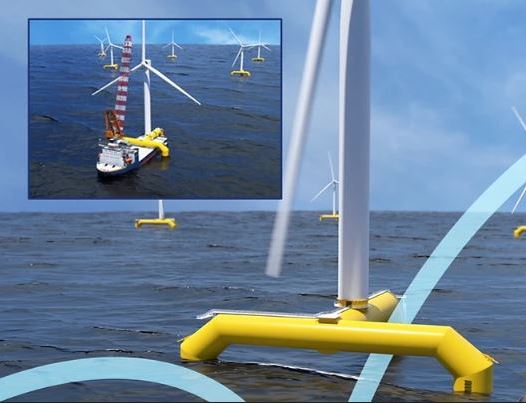
Norwegian company Ocean Ventus has launched a complete end-to-end solution for floating wind and is exploring the potential for a large-scale production facility in Norway.
Ocean Ventus’ design, which could save up to 40 per cent on steel costs and CO2 emissions, has now received Approval in Principle from DNV.
The firm said that its floater can be mass manufactured using similar methods employed for monopile production, while modular construction allows for simplified transport on low-cost vessels.
The assembly utilises two purpose-built barges that can complete 50 floating units per location annually, minimising the use of quay space, according to the press release.
The foundation is designed to work seamlessly with a patent-pending service vessel, enabling turbine maintenance offshore and eliminating the need to two to shore, Ocean Ventus said.
To further reduce costs, Ocean Ventus plans to establish dedicated large-scale production facilities and is exploring the potential for a first factory in Norway. The factory will target production of up to 50 structures per year and ramp up in 2028 for delivery to license rounds in several markets.
“Foundations are a key challenge to making floating wind cost competitive, and we believe that Ocean Ventus is uniquely positioned to address this challenge. Our simple design, modular components, and industrialized process allow for serial production and significant cost savings. We are excited to bring this technology to market and support the growth of offshore wind in Norway and worldwide”, said Halvor Ribe, Chair of Ocean Ventus AS.
According to an analysis made by Westwood Global Energy Group in June last year, close to 15 GW of floating wind capacity is expected to come online by 2030.
Westwood says that 15 GW of capacity will account for four per cent of the total 2030 offshore wind installed base with the other 96 per cent being fixed-bottom wind turbines.